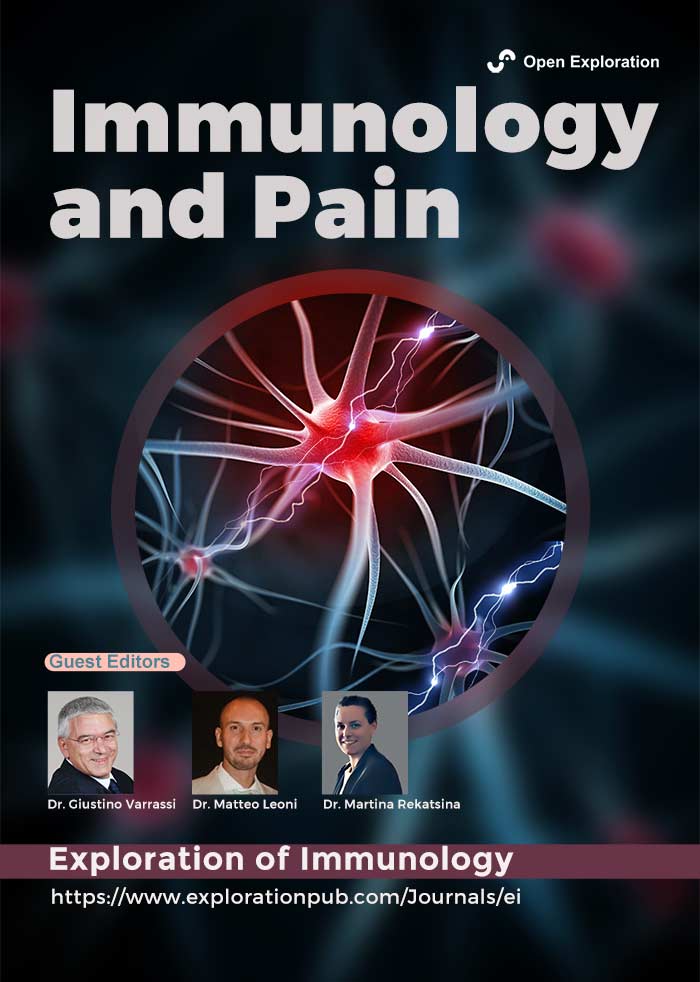-
Guest Editors
Dr. Giustino Varrassi E-Mail
Fondazione Paolo Procacci, 00193 Roma, Italy
Dr. Matteo Leoni E-Mail
University of La Sapienza, Roma, Italy
Dr. Martina Rekatsina E-Mail
Assistant Professor of Anaesthesiology and Pain Medicine, National and Kapodistrian University of Athens, Greece
About the Special Issue
From a scientific point of view, Pain Medicine represents an incredibly attractive topic, with over 230,000 publications on PubMed in the last 10 years. In the same period, over 10,000 of them connect "pain" to "immunology". The strict interactions between immunology and pain medicine are increasingly investigated, and many aspects are becoming more and more clear.
One of the most explored aspects is the interconnection between body lesions as generators of acute pain and immunological responses. In fact, acute pain is perceived as a protective and a cardinal feature of tissue lesions and inflammation.
Also, the interconnections between chronic pain and the immunological system are primarily explored. Chronic pain consequent to arthritis, nerve injury, cancer, and chemotherapy is associated with a chronic local inflammation in the peripheral or central nervous system, described as neuroinflammation.
More clearly, pain seems to be a hallmark of neuropathy, both acute and chronic, caused by tissue injuries and translating via inflammatory diseases. It is mediated by nociceptor sensory neurons that innervate the different parts of the body and protect from noxious stimuli at all levels and in different conditions.
The nociceptor system is sensitized by the inflammatory mediators produced by the immune system, including growth factors, lipid mediators and cytokines. It also detects pathogens and their secreted products, and generates pain during infection. Recently published data also suggest that bacterial infections regulate pain through direct actions on sensory neurons, and specific receptors are present in nociceptors to detect danger signals from infections. When activated, nociceptors react, releasing neuropeptides from their terminals. This potently shapes the function of innate and adaptive immune cells. So, the role of nociceptor interactions with the immune system in pain and infection is primarily discussed. Researchers are widely trying to understand these pathways better and find new approaches to treat infectious diseases and chronic pain.
In most of the arthritic pathologies (e.g., rheumatoid arthritis, gout, ankylosing spondylitis, knees and hips osteoarthritis), chemokines and cytokines (products of the immunity system) strongly participate in the local and central inflammatory response, and in the central nervous system sensitization. All these pathologies and the pain they generate are significantly connected to psychological distress represented by clinically significant anxiety and depression conditions. The role of cytokines, even if it is a clear connection between them, together with the role of the Janus kinase inhibitor, would still deserve deeper investigations.
The strict connections between pain medicine and immunology are also evident thinking of potential modulators of both of them. Physical activity in acute bout increases pain and reduce immunological defenses; while a regular and not stressful exercise modulates the central nervous system excitability, frequently associated with pain, and the immune system.
In other terms, an increasing quantity of data suggests that non-neuronal cells, such as immune cells, stem cells, and glial cells, and cytokines play active roles in the pathogenesis and resolution of pain. This "special issue" explores how non-neuronal cells interact with the nociceptive system and how the secretion of neuroactive signaling molecules may modulate pain. It would also discuss new therapeutic strategies to control neuroinflammation to prevent and treat chronic pain. We hope that all the interested researchers will contribute to achieving these goals submitting the results of their researches to this "special issue".
Keywords: Pain, pain Medicine, immunology, immunity System, infections, arthritis, rheumatoid Arthritis, knee Arthritis, hip Arthritis, gout, inflammatory responses, chemokines, cytokines, janus kinase inhibitor
Call for Papers
Published Articles
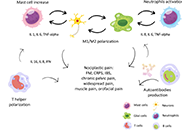 The putative role of immune-inflammatory mechanisms in nociplastic pain pathways: a narrative reviewOpen AccessReviewNociplastic pain is the fourth category of pain defined in recent years. It is a pain arising from altered nociception, despite the lack of clear evidence of actual or threatened tissue damage that [...] Read more.Mariateresa Giglio ... Filomena PuntilloPublished: January 13, 2025 Explor Immunol. 2025;5:1003178
The putative role of immune-inflammatory mechanisms in nociplastic pain pathways: a narrative reviewOpen AccessReviewNociplastic pain is the fourth category of pain defined in recent years. It is a pain arising from altered nociception, despite the lack of clear evidence of actual or threatened tissue damage that [...] Read more.Mariateresa Giglio ... Filomena PuntilloPublished: January 13, 2025 Explor Immunol. 2025;5:1003178
DOI: https://doi.org/10.37349/ei.2025.1003178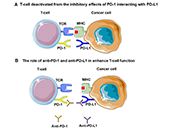 Dissecting the link between PD-1/PD-L1-based immunotherapy and cancer pain: mechanisms, research implications, and artificial intelligence perspectivesOpen AccessReviewCancer-related pain represents one of the most common complaints of cancer patients especially for those with advanced-stage of disease and/or bone metastases. More effective therapeutic strategies [...] Read more.Marco Cascella ... The TRIAL GroupPublished: December 04, 2024 Explor Immunol. 2024;4:802–821
Dissecting the link between PD-1/PD-L1-based immunotherapy and cancer pain: mechanisms, research implications, and artificial intelligence perspectivesOpen AccessReviewCancer-related pain represents one of the most common complaints of cancer patients especially for those with advanced-stage of disease and/or bone metastases. More effective therapeutic strategies [...] Read more.Marco Cascella ... The TRIAL GroupPublished: December 04, 2024 Explor Immunol. 2024;4:802–821
DOI: https://doi.org/10.37349/ei.2024.00174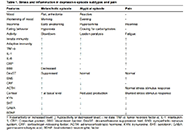 The role of immunity in comorbid pain and depressionOpen AccessReviewThe narrative review aims to shed light on the influence of inflammation in the comorbid chronic pain and major depressive disorder (MDD). This connection is known to be multifactorial, with a dynam [...] Read more.Antonella Ciaramella, Giancarlo CarliPublished: November 04, 2024 Explor Immunol. 2024;4:722–742
The role of immunity in comorbid pain and depressionOpen AccessReviewThe narrative review aims to shed light on the influence of inflammation in the comorbid chronic pain and major depressive disorder (MDD). This connection is known to be multifactorial, with a dynam [...] Read more.Antonella Ciaramella, Giancarlo CarliPublished: November 04, 2024 Explor Immunol. 2024;4:722–742
DOI: https://doi.org/10.37349/ei.2024.00168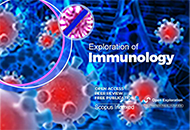 Evolving role of immunology in chronic pain medicine: tissue necrosis factor and interleukin modulatory treatmentsOpen AccessMini ReviewOur immune system acts to protect us in times of stress and traumatic injury. As part of the immune response, the body produces various cytokines, which mediate or modulate immune functions. Such cy [...] Read more.Rucha A. Kelkar ... Giustino VarrassiPublished: August 28, 2024 Explor Immunol. 2024;4:523–532
Evolving role of immunology in chronic pain medicine: tissue necrosis factor and interleukin modulatory treatmentsOpen AccessMini ReviewOur immune system acts to protect us in times of stress and traumatic injury. As part of the immune response, the body produces various cytokines, which mediate or modulate immune functions. Such cy [...] Read more.Rucha A. Kelkar ... Giustino VarrassiPublished: August 28, 2024 Explor Immunol. 2024;4:523–532
DOI: https://doi.org/10.37349/ei.2024.00156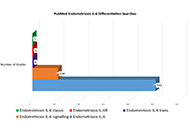 IL-6 signaling pathway differentiation for endometriosis and inflammatory diseasesOpen AccessReviewInterleukin-6 (IL-6) plays a critical role in the pathogenesis of various chronic inflammatory diseases, tracked across numerous fields of research. Despite this, a crucial aspect often overlooked i [...] Read more.Ryan D. CastlePublished: August 20, 2024 Explor Immunol. 2024;4:476–489
IL-6 signaling pathway differentiation for endometriosis and inflammatory diseasesOpen AccessReviewInterleukin-6 (IL-6) plays a critical role in the pathogenesis of various chronic inflammatory diseases, tracked across numerous fields of research. Despite this, a crucial aspect often overlooked i [...] Read more.Ryan D. CastlePublished: August 20, 2024 Explor Immunol. 2024;4:476–489
DOI: https://doi.org/10.37349/ei.2024.00153 -
-
Ongoing Special Issues
-
Completed Special Issues
